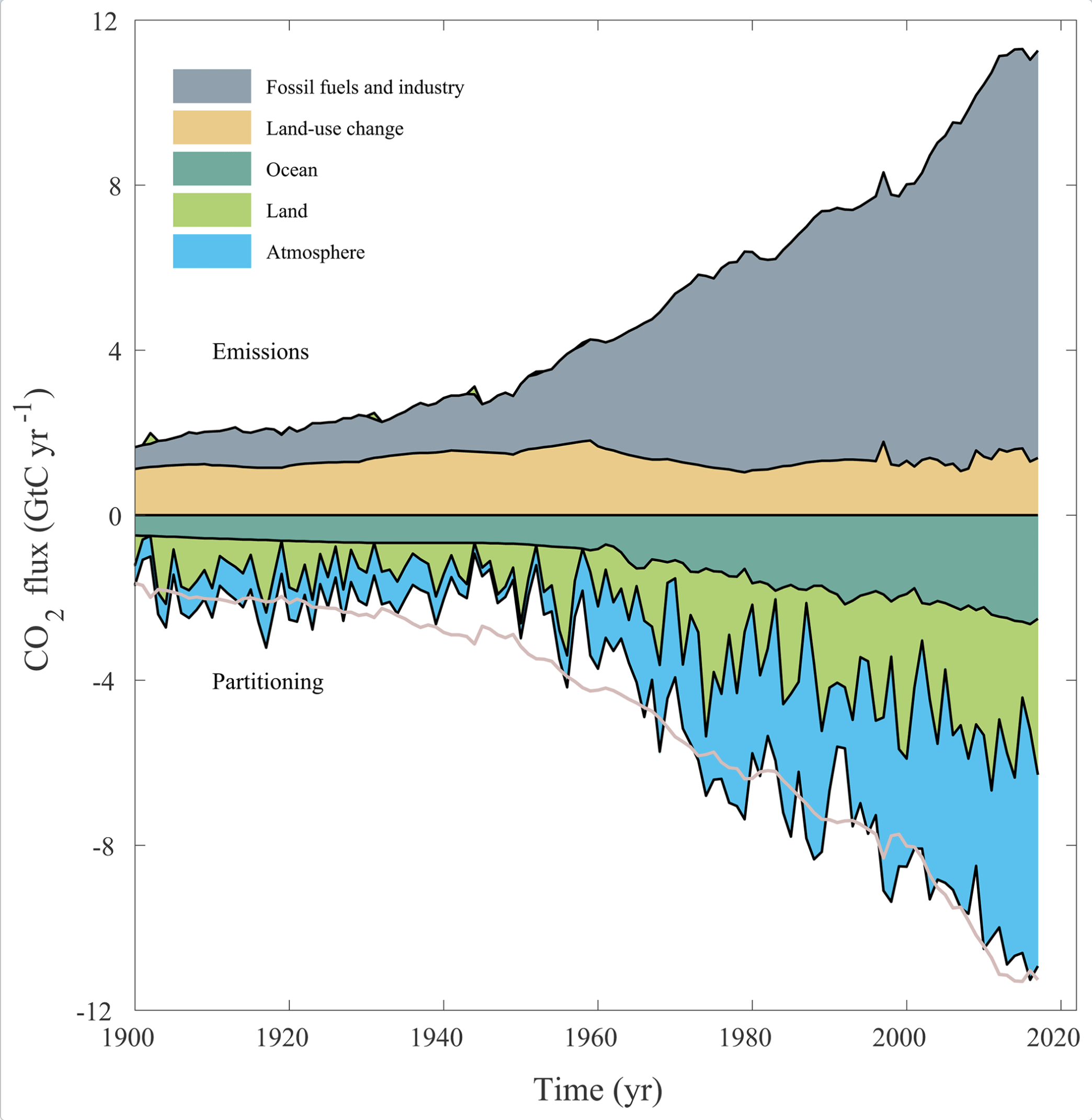Accurate assessment of anthropogenic carbon dioxide (CO2) emissions and their redistribution among the atmosphere, ocean, and terrestrial biosphere – the “global carbon budget” – is important to better understand the global carbon cycle, support the development of climate policies, and project future climate change. Here we describe data sets and methodology to quantify the five major components of the global carbon budget and their uncertainties. Fossil CO2 emissions (EFF) are based on energy statistics and cement production data, while emissions from land use and land-use change (ELUC), mainly deforestation, are based on land use and land-use change data and bookkeeping models. Atmospheric CO2 concentration is measured directly and its growth rate (GATM) is computed from the annual changes in concentration. The ocean CO2 sink (SOCEAN) and terrestrial CO2 sink (SLAND) are estimated with global process models constrained by observations. The resulting carbon budget imbalance (BIM), the difference between the estimated total emissions and the estimated changes in the atmosphere, ocean, and terrestrial biosphere, is a measure of imperfect data and understanding of the contemporary carbon cycle. All uncertainties are reported as ±1σ . For the last decade available (2008–2017),EFF was 9.4 ± 0.5 GtC yr−1, ELUC 1.5 ± 0.7 GtC yr−1, GATM 4.7 ± 0.02 GtC yr−1, SOCEAN 2.4 ± 0.5 GtC yr−1, and SLAND 3.2 ± 0.8 GtC yr−1, with a budget imbalance BIM of 0.5 GtC yr−1 indicating overestimated emis- sions and/or underestimated sinks. For the year 2017 alone, the growth in EFF was about 1.6 % and emissions increased to 9.9 ± 0.5 GtC yr−1. Also for 2017, ELUC was 1.4 ± 0.7 GtC yr−1, GATM was 4.6 ± 0.2 GtC yr−1,SOCEAN was 2.5 ± 0.5 GtC yr−1, and SLAND was 3.8 ± 0.8 GtC yr−1, with a BIM of 0.3 GtC. The global atmo- spheric CO2 concentration reached 405.0 ± 0.1 ppm averaged over 2017. For 2018, preliminary data for the first 6–9 months indicate a renewed growth in EFF of +2.7 % (range of 1.8 % to 3.7 %) based on national emission projections for China, the US, the EU, and India and projections of gross domestic product corrected for recent changes in the carbon intensity of the economy for the rest of the world. The analysis presented here shows that the mean and trend in the five components of the global carbon budget are consistently estimated over the period of 1959–2017, but discrepancies of up to 1 GtC yr−1 persist for the representation of semi-decadal vari- ability in CO2 fluxes. A detailed comparison among individual estimates and the introduction of a broad range of observations show (1) no consensus in the mean and trend in land-use change emissions, (2) a persistent low agreement among the different methods on the magnitude of the land CO2 flux in the northern extra-tropics, and (3) an apparent underestimation of the CO2 variability by ocean models, originating outside the tropics. This living data update documents changes in the methods and data sets used in this new global carbon bud- get and the progress in understanding the global carbon cycle compared with previous publications of this data set (Le Quéré et al., 2018, 2016, 2015a, b, 2014, 2013). All results presented here can be downloaded from https://doi.org/10.18160/GCP-2018.


